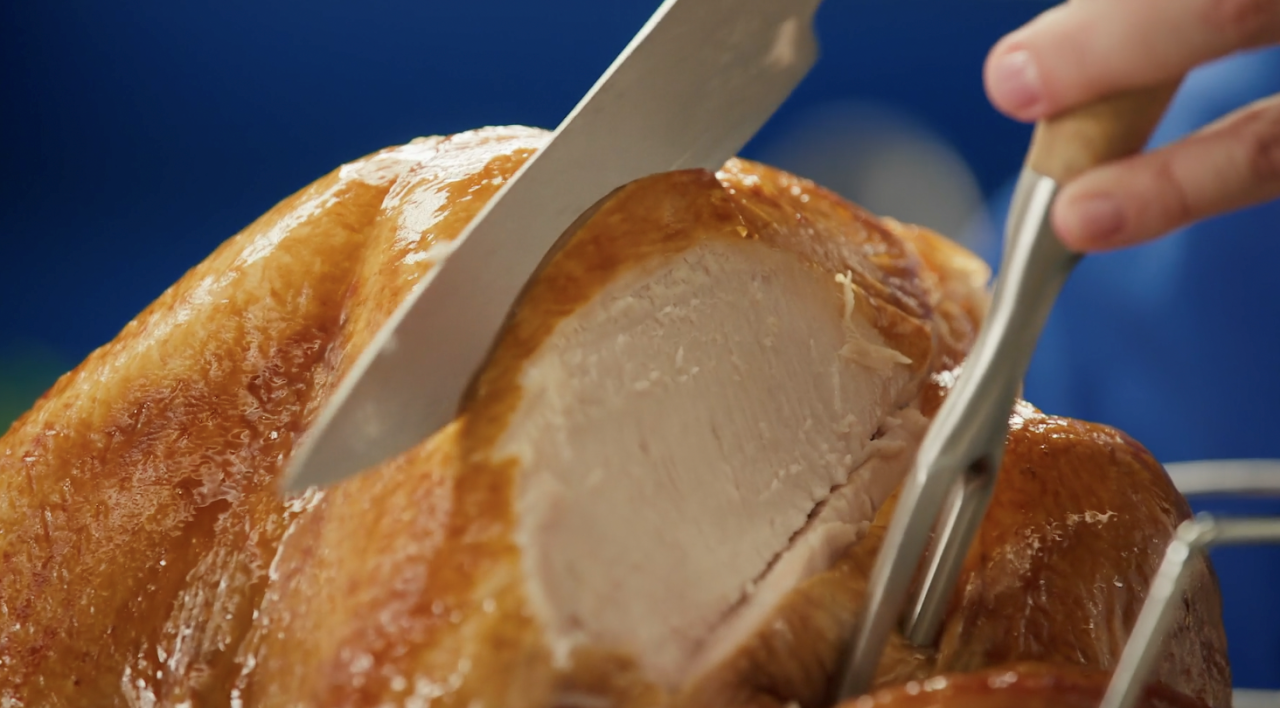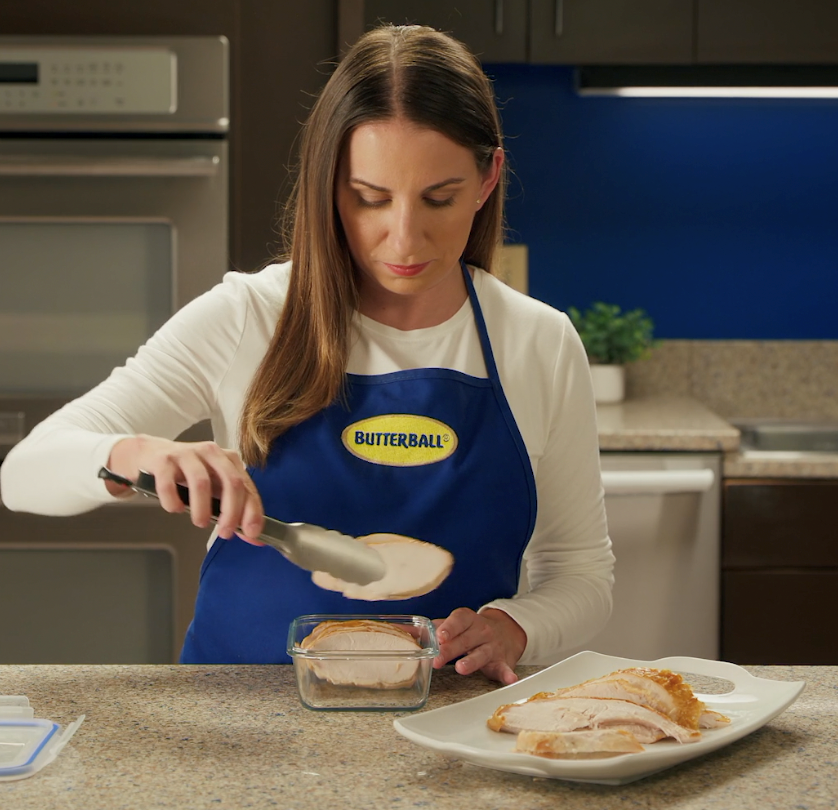TULSA, Okla. — If you're feeling anxious about cooking the perfect turkey, you're not alone. 2 News Oklahoma spoke with Andrea Balitewicz, one of the supervisors at the Butterball Turkey Talk Line, to get expert advice on the most common turkey cooking challenges.

"Thawing is definitely our number one call," Balitewicz said.
If your turkey isn't fully thawed on Thanksgiving morning, don't panic. You can use the cold water thawing method by submerging the turkey in its package in cold water in a sink, tub or cooler. The key is refreshing that water every 30 minutes to speed up the thawing process.
"You want to make sure you get that meat as thawed as possible, all the ice off, so that you don't have to extend that cooking time and dry out the turkey," Balitewicz said.

Skip the basting
Contrary to popular belief, basting your turkey isn't necessary and can actually work against you.
"You're just gonna want to brush it with a little bit of oil before you put it in the oven. That's how you get this golden brown color," Balitewicz said. "Every time you open up that oven door, you're letting out that precious oven heat, and that's going to also extend that cooking time, possibly drying out the turkey."
Instead, cook your turkey at 325 degrees and only check the temperature about two-thirds of the way through cooking.

Stuffing safety
If you choose to stuff your turkey, food safety is crucial. The turkey needs to reach 170 degrees in both the breast and thigh, while the stuffing must reach 165 degrees in the center.
"Take the temperature of the stuffing deep in the stuffing, you want that to reach 165 degrees. Then you know it's food safe and ready to come out of the oven," Balitewicz said.
Dealing with uneven cooking
If one part of your turkey is cooking faster than another, you can rotate it in the oven or place a sheet of foil over the area that's heating up too quickly to shield it and slow down the cooking until the rest of the bird is caught up.
Consider spatchcocking
Spatchcocking involves cutting out the backbone and opening up the turkey, and pressing it flat which provides more even cooking. However, Balitewicz recommends this method only for smaller turkeys weighing 12 to 14 pounds, as larger birds won't fit in most ovens when opened up this way.
Use a rack or create one
A roasting rack is important because it lifts the turkey up so hot air can flow all around for even cooking. If you don't have a rack, you can use vegetables to lift the turkey or create a coil from foil.
"I take a long sheet of foil, kind of crumple it up, and turn it into a circular fashion, kind of like a snake or a coil, and you can set the turkey right on that," Balitewicz said.
Temperature is key
The most accurate way to know your turkey is done is using a meat thermometer. Check for 170 degrees deep in the breast and 170 degrees deep in the thigh.
Once your turkey reaches the proper temperature, let it rest covered with foil and a clean dish towel. It will stay hot for at least a couple of hours, giving you time to prepare side dishes.
"All the juices will redistribute throughout the meat, making it so much easier for carving," Balitewicz said.

Carving
"When you carve, there's a couple of different ways, said Balitewicz, "You can remove the entire turkey breast and place it on a cutting board and slice it, or you can do slices right from the turkey. And what you're gonna want to do is make a slice across the turkey, so that you cut under the breast meat, and then you slice your pieces right off the breast. And then you can cut down through the leg and the thigh to remove those pieces as well."

Storing leftovers safely
After serving, carve all the meat from the bones and place it in the refrigerator to cool. You can use leftovers for 2 to 3 days after Thanksgiving. For longer storage, wrap the meat well in plastic wrap and foil or place in freezer bags. Turkey leftovers will keep in the freezer for a couple of months.
For first-time turkey cooks, Balitewicz's advice is simple: plan ahead, thaw properly, and always use a meat thermometer.
"That's the most accurate way and food-safe way to know that your turkey is done," she said.
For more turkey tips and leftover recipes, visit butterball.com. You can also call the Butterball Turkey Talk Line 1-800-butterball.
This story was reported on-air by a journalist and has been converted to this platform with the assistance of AI. Our editorial team verifies all reporting on all platforms for fairness and accuracy.
Stay in touch with us anytime, anywhere --
- Download our free app for Apple, Android and Kindle devices.
- Sign up for daily newsletters emailed to you
- Like us on Facebook
- Follow us on Instagram
- Watch LIVE 24/7 on YouTube


